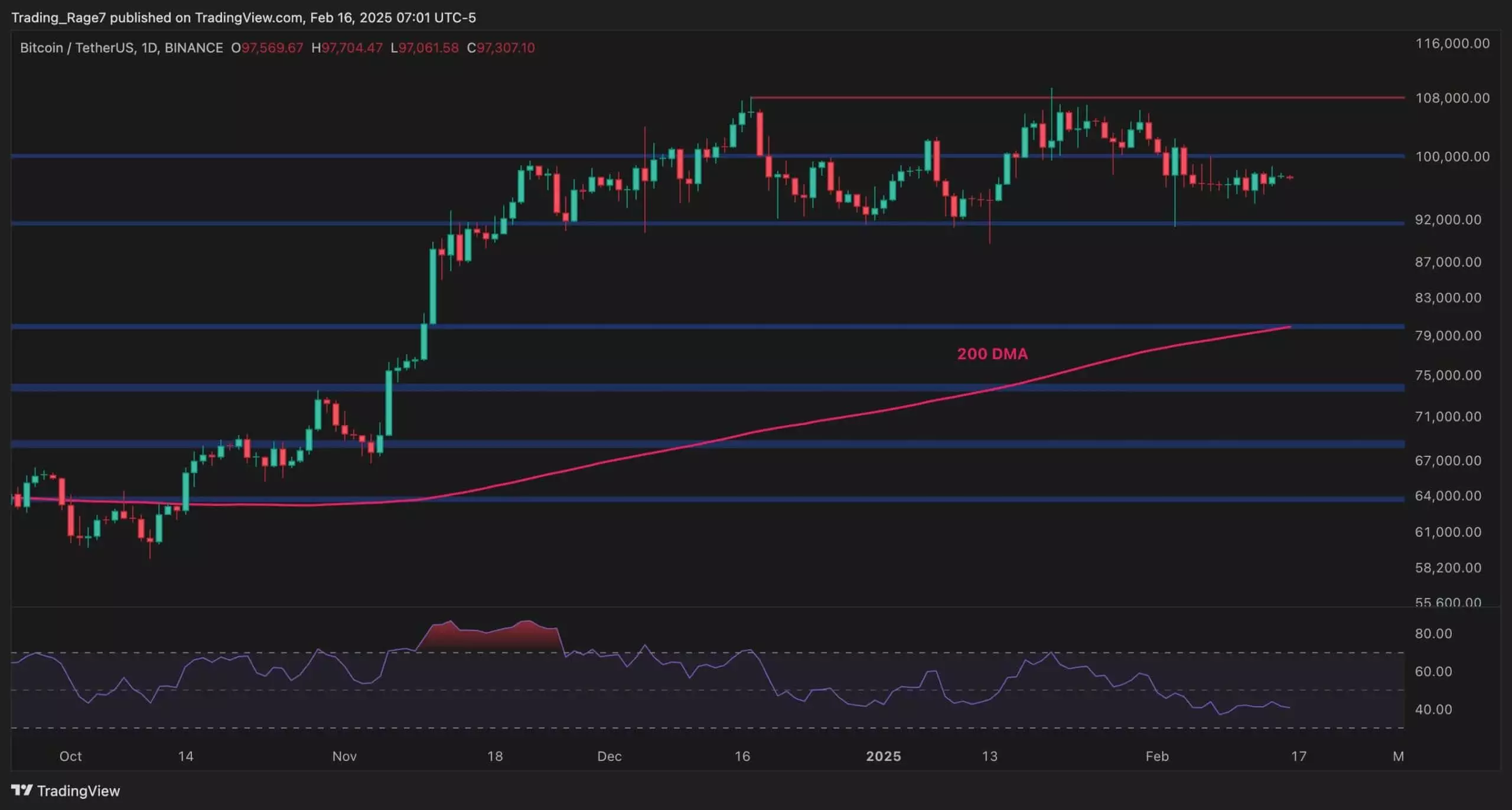Bitcoin’s recent price movements have thrust the cryptocurrency into a state of uncertainty, marked by tightly consolidated trading ranges. While traders and investors are keenly observing the market for signs of recovery or impending downturns, the lack of clear direction continues to cloud the future of Bitcoin. Understanding whether the market is undergoing accumulation or distribution will be critical for predicting Bitcoin’s trajectory.
After experiencing a notable decline from the psychological $100,000 threshold, Bitcoin’s price has entered a phase of sideways movement. Currently, the price oscillates between a support level of approximately $92,000 and a resistance marked by previous highs. The daily chart reveals an important technical indicator: the Relative Strength Index (RSI) remains below the 50% mark, a sign that the prevailing trend is bearish. Despite this, Bitcoin’s price remains above the significant 200-day moving average, currently around the $80,000 level, which suggests that a deeper correction could be on the horizon before any potential bullish momentum surfaces.
Traders are now shifting their focus to the shorter-term charts, particularly the 4-hour timeframe. Here, a symmetrical triangle pattern has emerged, characterized by price fluctuations within converging trend lines. As the market encounters resistance near the upper boundary, it appears poised to retest the lower boundary. Given that the RSI on this shorter chart also reflects bearish sentiment by remaining below the neutral 50% level, it raises the likelihood of a short-term downward move. A breakdown of this triangular formation could see Bitcoin tumbling towards the $92,000 support area.
The current price action around Bitcoin remains volatile and indecisive, which makes the analysis of market participant behavior crucial. One insightful metric is Bitcoin’s exchange reserve, which indicates the volume of Bitcoin stored within exchange wallets. A rapid decline in exchange reserves over recent weeks hints at a reduction in selling pressure as holders transfer their coins off-exchanges, potentially signaling an accumulation phase.
Yet, the recent uptick in exchange reserves suggests a shift in sentiment among investors. This increase may indicate uncertainty or hesitation regarding the market’s next move. If market participants start moving their holdings back onto exchanges, it could imply a preparation for selling, thereby indicating growing pessimism. Therefore, if this trend of increasing reserves persists, it is probable that we will see further price declines in the near future.
Bitcoin finds itself at a critical juncture, marked by ambiguous price range movements and contrasting indicators of market sentiment. The interplay between accumulation and distribution will play a pivotal role in shaping Bitcoin’s next steps. For traders, the emphasis should be on monitoring these dynamics closely to better navigate the uncertain waters ahead. As market conditions continue to evolve, a wait-and-see approach may be the best strategy until clearer signals of direction emerge.















